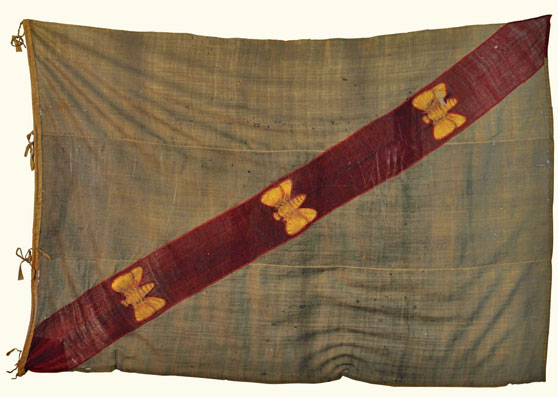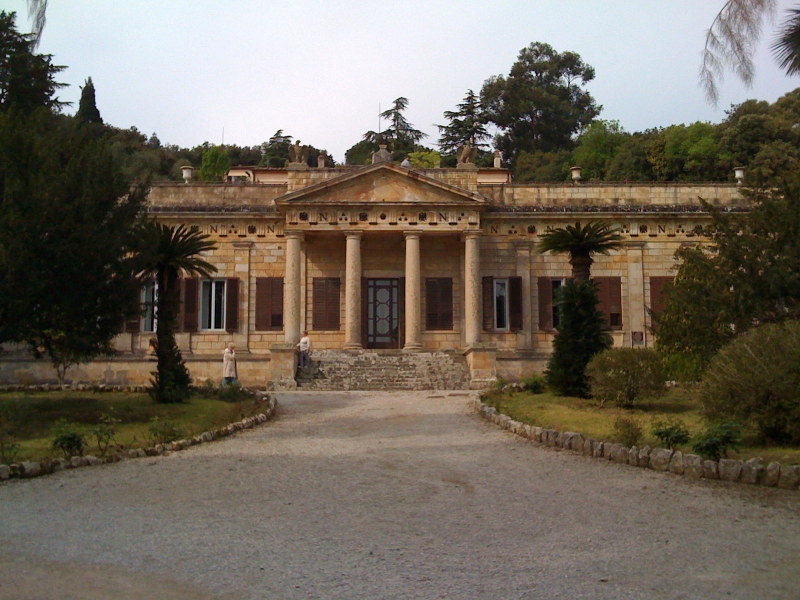L’Esilio di Napoleone all’Isola d’Elba Posted by Serena on Jan 25, 2012 in Uncategorized
Napoleone Bonaparte, who was born in Corsica in 1769 and died in exile on the island of St. Helena in 1821, was once the Emperor of most of Europe. In 1814 he was forced to downsize somewhat, becoming instead emperor of the little Isola d’Elba (Island of Elba) 10 km off the Tuscan coast, which covers an area of just 223 square kilometres. Following his disastrous Russian campaign and defeat at the Battle of Leipzig, the coalition forces, consisting of England, Prussia, Russia, and Austria, conquered Paris in March 1814.
Napoleone was forced to abdicate and choose between Corfu and l’Isola d’Elba as his place of exile. Napoleone choose the latter, and during his 10 months as emperor of Elba brought revolutionary changes to the lives of the local population.
When he arrived on Elba on the 3rd of May 1814, he brought with him a flag of his own design which he presented to the islanders as the bandiera dell’Elba (flag of Elba – see photo below), which is still Elba’s official flag.
On disembarking, he was received with great enthusiasm by the population and presented with the ‘keys’ to the island’s main town, Portoferraio, by the mayor. As the the town keys didn’t actually exist, it is said that the mayor used the keys to his cantina (cellar) and painted them gold! A procession was then formed which went up to the local church where a Te Deum (Thanks giving mass) was celebrated.
Following an uncomfortable first night at the Biscotteria, the council hall, Napoleone decided to restore some buildings for his own residences. The first, situated on the coast, was La Villa dei Mulini (The Villa of the Mills), which was built, as the name suggests, on the site of 4 mills. For his summer residence he chose La Villa di San Martino (see below), in the wooded valley of San Martino. Both these buildings are now museums.
An abandoned church was transformed into a theatre called il Teatro dei Vigilanti (still in use today) in order to host sumptuous feste e balli in maschera (parties and masked balls). Even today these events are still engraved in the memory of the islanders.
However, Napoleone didn’t spend all his time (and money) simply restoring buildings for his personal use. During his stay on the island he carried out a series of improvements to the way things were run, from the control of stray dogs to the administration of public health and a more efficient bureaucracy. He had new wider roads built to allow the passage of carriages, and promoted the island’s iron mining industry. He also built a small glass and ceramic factory that didn’t meet with much success. The port and the merchants profited from the continuous arrival of important guests and the large quantities of supplies needed to sustain the court and garrison.
Napoleon’s wife, Maria Luisa, daughter of the Austrian emperor, never set foot on l’Isola d’Elba. However, three women did come to visit him: his mother Letizia, who is said to have fallen in love with the island; his favourite sister, Paolina Borghese, who brought to this little island a taste of the latest fashion from Paris; and for just a few days Napoleon’s Polish mistress, Maria Walewska, with their son Alessandro.
Despite all the work he poured into this little island, Napoleone had not abandoned hope of a return to the European scene. Having intuited that his enemies were planning to send him to a more out of the way and less pleasant exile, Napoleon started planning his escape from Elba. On the night of the 26th of February 1815 he took advantage of the absence of the British colonel Campbell, captain of the fleet that guarded the former French emperor, to carry out his escape plan at the end of a masquerade party. Napoleon boarded the French brig Incostant, which in the previous 10 days had been repainted and refilled with water, food and weapons. He was followed by a small fleet containing a total of 1,100 men. The convoy travelled westward separately in order not to attract attention.
Napoleone left l’Isola d’Elba for ever, but the Elbani (the people of Elba) never forgot him. Every year on the 5th of May, the anniversary of Napoleon’s death, they celebrate una messa di Requiem in suo suffragio (a requiem mass for his repose).

Build vocabulary, practice pronunciation, and more with Transparent Language Online. Available anytime, anywhere, on any device.






Comments:
Patricia Grande:
I’ve studied Italian language on Elba it’s a jewel of a place . Of course visited Napoleons houses.! My visit to the island of Elba is most memorable.
Mulder,Jeannet:
Salve Serena,
Thanks for your story, memories of ELBA;
Being last summer on Elba we haven’t heard or seen of an flag designed by Napoleon. Our guide even didn’t mentioned much about then saying that there isn’t much to be seen of Napoleon’s exile left worthwhile where he resided etc. but the island’s nature
etc.; to be there beautiful indeed! Jeannet